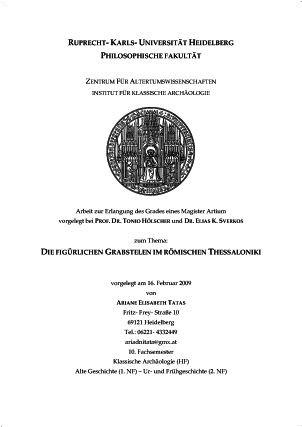
How to Cite
Published
Downloads
Die figürlichen Grabstelen im römischen Thessaloniki
„Ταῦτα, φίλοι ∙ μετὰ ταῦτα τί | γὰρ πλέον; οὐκέτι ταῦτα. |στήλλη ταῦτα λαλεῖ καὶ λί|θος ∙ οὐ γὰρ ἐγώ“. A funerary epigram of the 3rd century AD from Eumeneia in Phrygia ends with these words. The first words give the impression that the deceased might be addressing passersby and onlookers of his grave’s stele for the last time. Naturally, this impression is a deceiving one, because whichever hopes or fears our Gaius might have had with regard to the afterworld, we certainly will not be able to get him to speak ever again. With this in mind we here at least will attempt to interpret the language of the gravestones as conveyed through both images and words. The study at hand thus examines the figural sepulchral steles of Thessaloniki and its chora during the Roman period, i. e. primarily between the early 1st century BC and the end of the 3rd century AD. The goal was to gather the material in its entirety.






